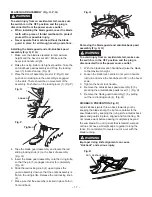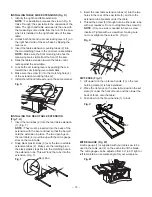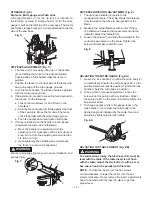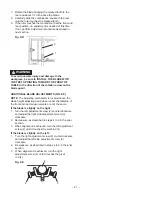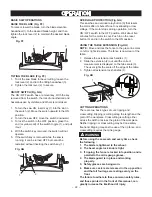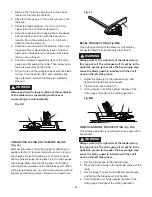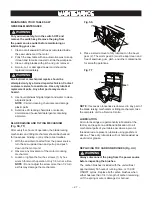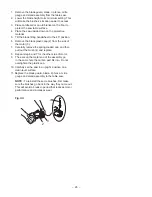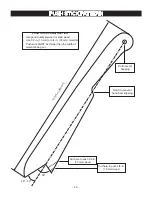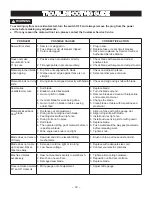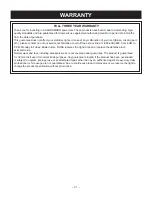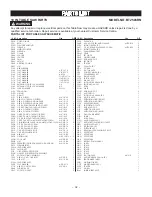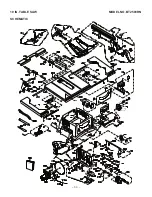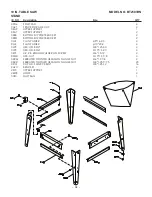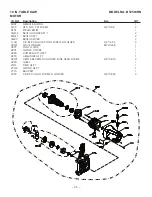
– 22 –
OPERATION
BASIC SAW OPERATIONS
RAISE THE BLADE (Fig. FF)
To raise or lower the blade, turn the blade elevation
handwheel (1) to the desired blade height, and then
tighten the lock lever (2) to maintain the desired blade
angle.
TILTING THE BLADE (Fig. FF)
1. To tilt the saw blade for bevel cutting, loosen the
lock lever (2) and turn the tilting handwheel (3).
2. Tighten the lock lever (2) to secure.
ON/OFF SWITCH (Fig. GG)
The ON / OFF switch has a removal key. With the key
removed from the switch, the risk of unauthorized and
hazardous use by children and others is minimized.
1. To turn the saw ON, insert key (1) into the slot in
the switch (2). Move the switch upward to the ON
position.
2. To turn the saw OFF, move the switch downward.
3. To lock the switch in the OFF position, grasp the
end (or yellow part) of the switch toggle (1), and pull
it out.
4. With the switch key removed, the switch will not
operate.
5. If the switch key is removed while the saw is
running, it can be turned OFF but cannot be
restarted without inserting the switch key (1).
1
2
3
Fig. FF
Fig. GG
OVERLOAD PROTECTION (Fig. GG)
This saw has an overload relay button (3) that resets
the motor after it shuts off due to overloading or low
voltage. If the motor stops during operation, turn the
ON / OFF switch to the OFF position. Wait about five
minutes for the motor to cool. Push in on the reset
button (3) and turn the switch to the ON position.
USING THE TABLE EXTENSION (Fig. HH)
NOTE :
Move and lock the fence to the green line mark
on left or right side scale. The fence is now clear of the
table.
1. Release the extension lock handles (1).
2. Slide the extension (2) out until the correct
measurement is displayed on the tube scale (3).
The user sights the scale off the edge of the table.
3. Tighten all extension lock handles (1).
CUTTING OPERATIONS
There are two basic types of cuts: ripping and
crosscutting. Ripping is cutting along the length and the
grain of the workpiece. Crosscutting is cutting either
across the width or across the grain of the workpiece.
Neither ripping nor crosscutting may be done safely
freehand. Ripping requires the use of the rip fence, and
crosscutting requires the mitre gauge.
Before using the saw each and every time, check
the following :
1. The blade is tightened to the arbour.
2. The bevel angle lock knob is tight.
3. If ripping, the fence is locked into position and is
parallel to the mitre gauge groove.
4. The blade guard is in place and working
properly.
5. Safety glasses are being worn.
6. Make sure casters are released in the up position
and that all four legs are resting evenly on the
floor.
The failure to adhere to these common safety rules,
and those printed in the front of this manual, can
greatly increase the likelihood of injury.
Fig. HH
WARNING
!
DO
WN
UP
1
2
3
13
12
14
15
16
11
0
1
2
3
1
3










